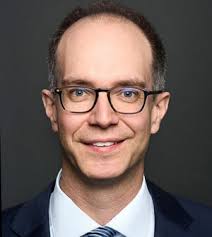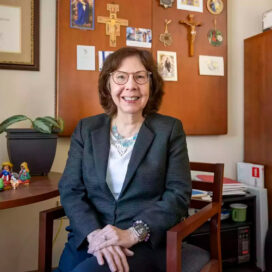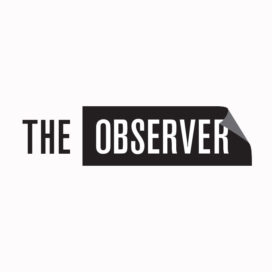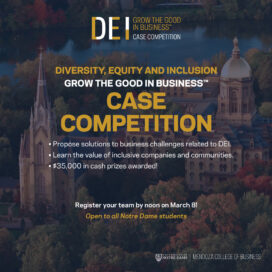Starbucks icon makes appearance
Published: March 30, 2007 / Author: YaVonda Smalls
Valerie Detwiler sat at a table Thursday in the Starbucks coffee shop in Notre Dame’s LaFortune Student Center, her face glowing with eagerness.
She was about to meet a man she considers a hero. An icon. A genius.
“Everyone else is a little on edge, and I’m just really excited about it,” the Starbucks second shift supervisor said as she awaited the arrival of Howard Schultz, chairman and former chief executive of Starbucks. “Can I have your autograph — I mean, really excited.”
Detwiler, who worked at another Starbucks location before switching to the campus location four months ago, said she had never met Schultz before.
“And now, he’s gonna be here,” she said almost in disbelief. “And now it’s like, whoops, maybe I should have read more of his books.”Behind the counter, several Starbucks employees filled customers’ orders, ranging from chai to frappuccinos as commotion built up throughout the shop.
“I put a couple extra people on staff, just to be on the safe side,” said Kimberly Candler, day
lead retail associate.
Minutes later, Schultz walked through the door with a small group of people and strolled up to the counter, nonchalantly placing one hand on the counter and the other on his hip.
As he turned around, fans approached him eagerly, several shaking his hand and exchanging small talk as cameras flashed around him. Detwiler even walked away with an autograph addressed to her father, Terry Jones — a huge Starbucks fan. For many of those in the room, they were excited to see Schultz stand before them for the first time. And the Starbucks employees were looking forward to seeing him tour the store.
Unfortunately, there wasn’t time for that.
But the visit to the coffee shop wasn’t the main reason he was at Notre Dame. There was a much bigger reason.
Honoring an icon
Schultz was on campus Thursday to receive the Rev. Theodore M. Hesburgh, C.S.C., Award for Ethics in Business and to deliver the Frank Cahill Lecture in Business Ethics at the Mendoza College of Business. The Hesburgh Award, first given in 2000, is presented by Notre Dame’s Center for Ethics and Religious Values in Business and Institute for Ethical Business Worldwide.
“I’m really humbled and honored,” he said as he sat at a table in Starbucks.
Schultz’s award reflects years of his company’s devotion to business ethics — a stance that is rooted heavily in Schultz’s upbringing.
When Schultz was growing up in New York decades ago, his family was so poor that they had to live in federally subsidized housing.
“I knew early on what it was like to come from a family that didn’t have much,” he said. And
that’s what propelled Schultz to help make Starbucks among the leaders in America when it comes to providing benefits to part-time people — benefits like health care and ownership. Not only do Starbucks employees working as few as 20 hours per week qualify for health benefits, but many of the 145,000 workers are eligible for stock options.
“You can’t attract and retain great people unless you treat them well,” he said. “I don’t think you can build a great business model today without being transparent and without being ethically responsible.”
Though not all companies keep social responsibility as a priority today, more business leaders are realizing the importance of doing the right thing, and that trend should continue, Schultz said.
“I’m more optimistic about that today than I ever have been,” he said, noting that it is possible for any company to make a profit while taking care of its employees and giving back to the community.
However, one of Starbucks’ challenges over the years, he said, has been to promote growth without turning itself into a sterile, cookie-cutter establishment.Over the past 10 years, in order to achieve the growth, development, and scale necessary to go from less than 1,000 stores to 13,000 stores and beyond, Starbucks has made a series of decisions that contributed to the watering down of the Starbucks experience, he wrote in a memo back in February.
He notes that he’s written many memos like this throughout the past 25 years. “This one just
happened to get public,” he said.
To counter the “commoditization” of the Starbucks brand, he emphasizes the need to push for innovation and to do the things necessary to once again differentiate Starbucks from all other coffee shops.
“As a business leader, you can’t embrace the status quo,” he said. “You have to keep pushing for reinvention.”
###
/news_and_events/news_articles/article/1201/starbucks-icon-makes-appearance




